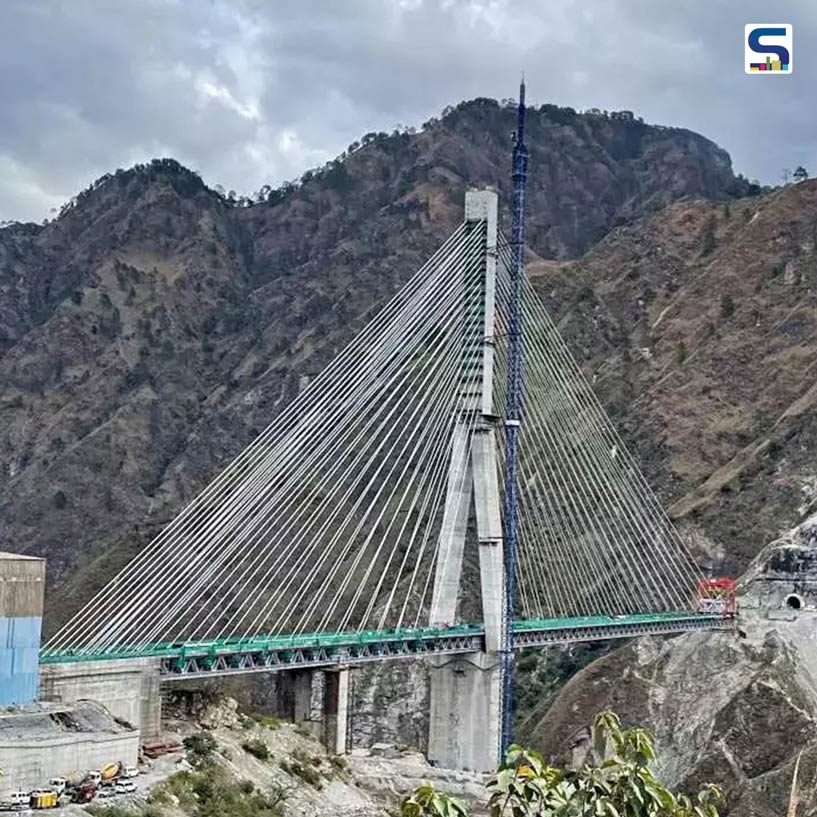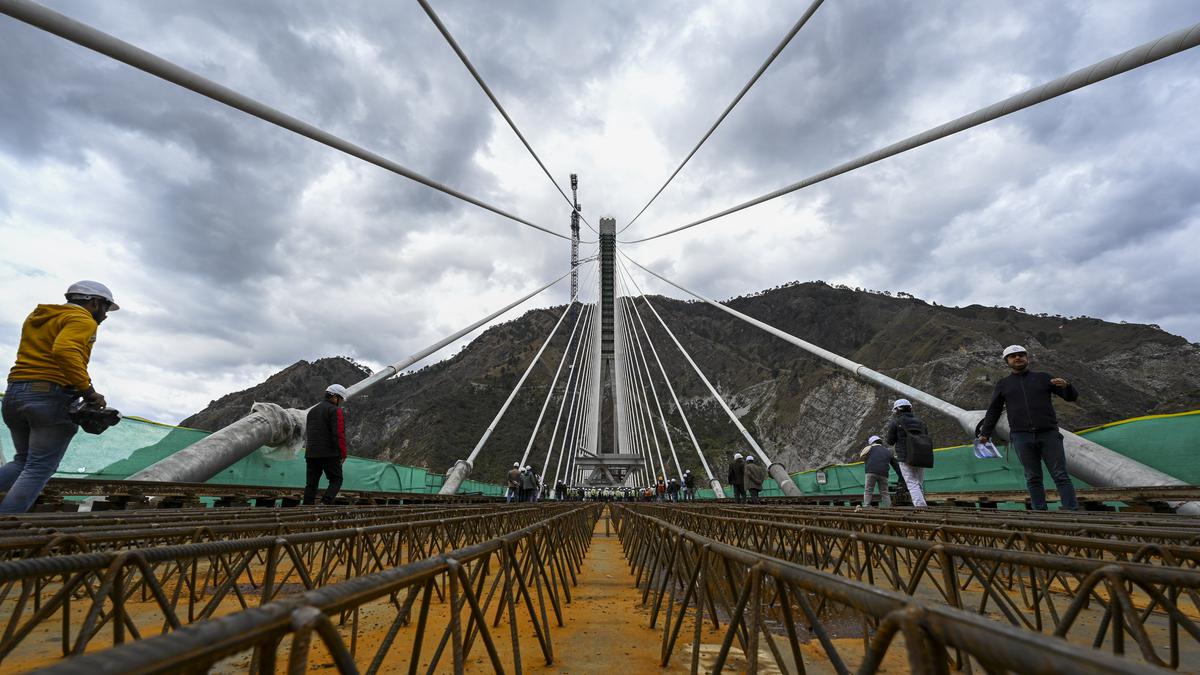
The construction of the Anji Khad bridge, which is India’s first cable-stayed railway bridge measuring 725.5 meters in Reasi district, Jammu and Kashmir is nearing its completion after 20 years of its making. While its deck is scheduled to be ready by May this year, as per Northern Railway officials. SURFACES REPORTER (SR) presents here all the vital details about this bridge. Scroll down to read the complete post:
Part of the Indian Railways’ ambitious Udhampur-Srinagar-Baramulla-Rail Link (USBRL) project, the Anji bridge will seamlessly connect Kashmir to Jammu, and the rest of India.
Northern Railways entrusted the construction of the mammoth project to Konkan Railway Corporation Limited (KRCL) and Hindustan Construction Company. Senior KRCL official also mentioned, “Konkan Railway has prior experience of executing the largest railway project of the century in Asia. It cut through ghat sections and built 96 tunnels while building a 756 km railway line connecting Maharashtra, Goa and Karnataka.” Further, it is said that the speed of the trains will be 100 kilometres per hour on the bridge being constructed around 80 kilometres away from Jammu.
 The Rs 400 crore project labelled to be India’s first cable-stayed rail bridge is finally nearing its completion after missing several deadlines, including those in 2017 and 2022. The team has already finished 41 out of 47 segments with the hope that the remaining ones would be completed by April-end or in the first week of May. Ancillary works of the bridge such as deck casting, tuning the cabling, and joining of railway tracks will be finished soon.
The Rs 400 crore project labelled to be India’s first cable-stayed rail bridge is finally nearing its completion after missing several deadlines, including those in 2017 and 2022. The team has already finished 41 out of 47 segments with the hope that the remaining ones would be completed by April-end or in the first week of May. Ancillary works of the bridge such as deck casting, tuning the cabling, and joining of railway tracks will be finished soon.
Bridge Details
Anji bridge is an "asymmetrical" bridge that is supported by a single pylon- which is a huge vertical-tower like structure. This pylon is 1,086 feet high from the river bed, which is almost equivalent to a 77- storey building. The structure has tunnels on both ends. One tunnel on the Katra end is 5 km in length while another on the Kashmir end is 3 km in length. According to the officials, the track is laid in both tunnels. Moreover, the cable-stayed portion of the 725.5 metres long bridge only covers 472.25.
The deck portion of the 193-metre tall bridge from the foundation is 51 meters, while the invested Y-shaped pylon above the deck level is 142 meters.
Further, it is said that the codal life (normal average life of machines, equipment, infrastructure calculated as per working shift) of the Anji bridge is 120 years and it will be able to bear the explosion of 40 kg of explosive material. Moreover, the project will also have integrated monitoring systems with multiple sensors positioned at different locations.
Earthquake-Resistant Bridge
Surrounded by mountain peaks on both sides, the construction site is subject to gusty winds, however, the structure of the bridge itself could sustain winds blowing up to 216 kilometres per hour. Further, the bridge is able to not just withstand winds but also earthquakes. Besides seismic proneness of the region, detailed site-specific investigations were carried out by IIT, Roorkee and IIT, Delhi, informed the officials.
Source: Free Press Journal
Keep reading SURFACES REPORTER for more such articles and stories.
Join us in SOCIAL MEDIA to stay updated
SR FACEBOOK | SR LINKEDIN | SR INSTAGRAM | SR YOUTUBE
Further, Subscribe to our magazine | Sign Up for the FREE Surfaces Reporter Magazine Newsletter
Also, check out Surfaces Reporter'sReporter's encouraging, exciting and educational WEBINARS here.
You may also like to read about:
Londons Newest Railway Line By Grimshaw Features Sinuous Surfaces With Fluid And Curved Junctions in the Passenger Tunnels | Elizabeth Line
Indias First Semi High-Speed Regional train For Delhi-Meerut RRTS; Can Run at 180 kmph & Decrease Travel Time by 40%
And more...